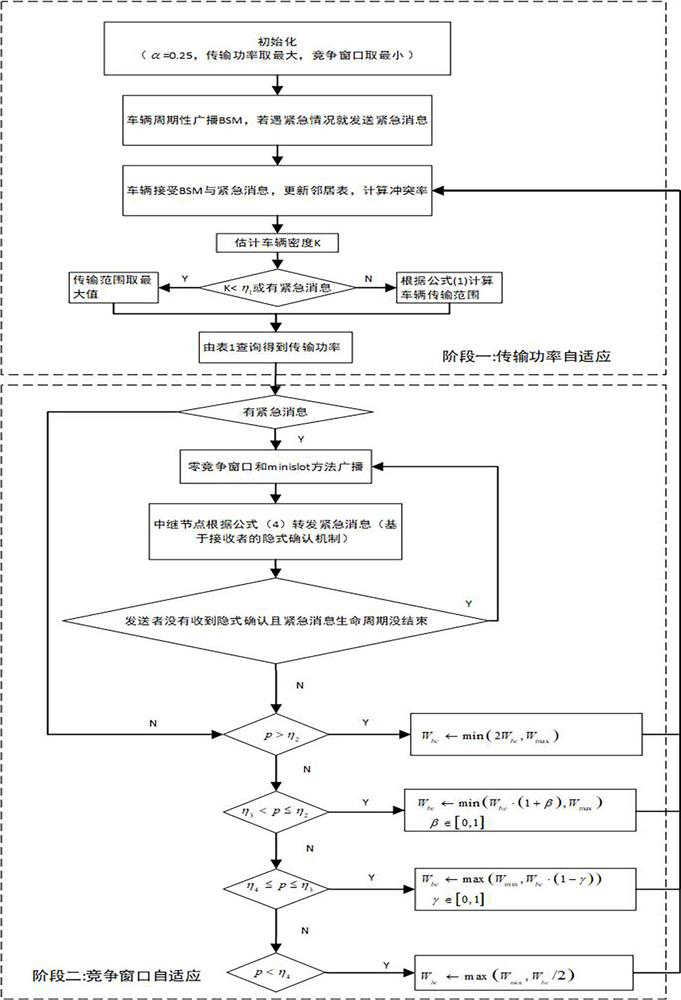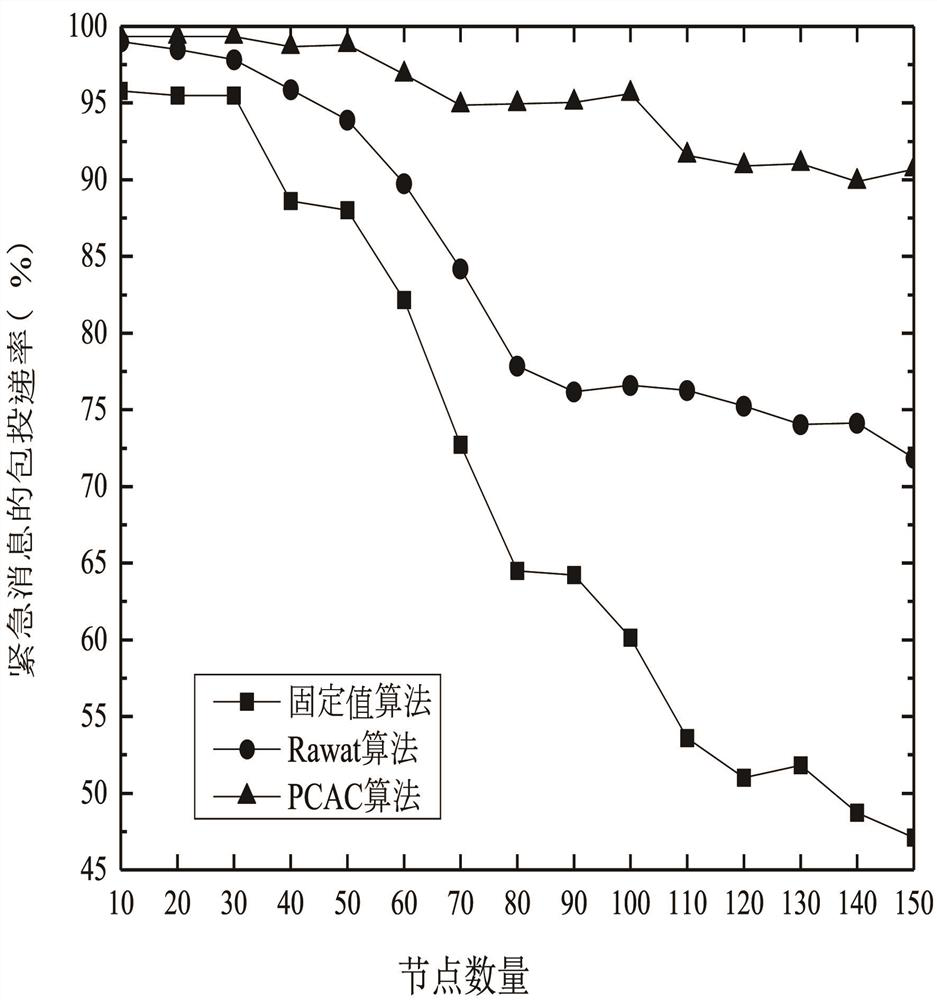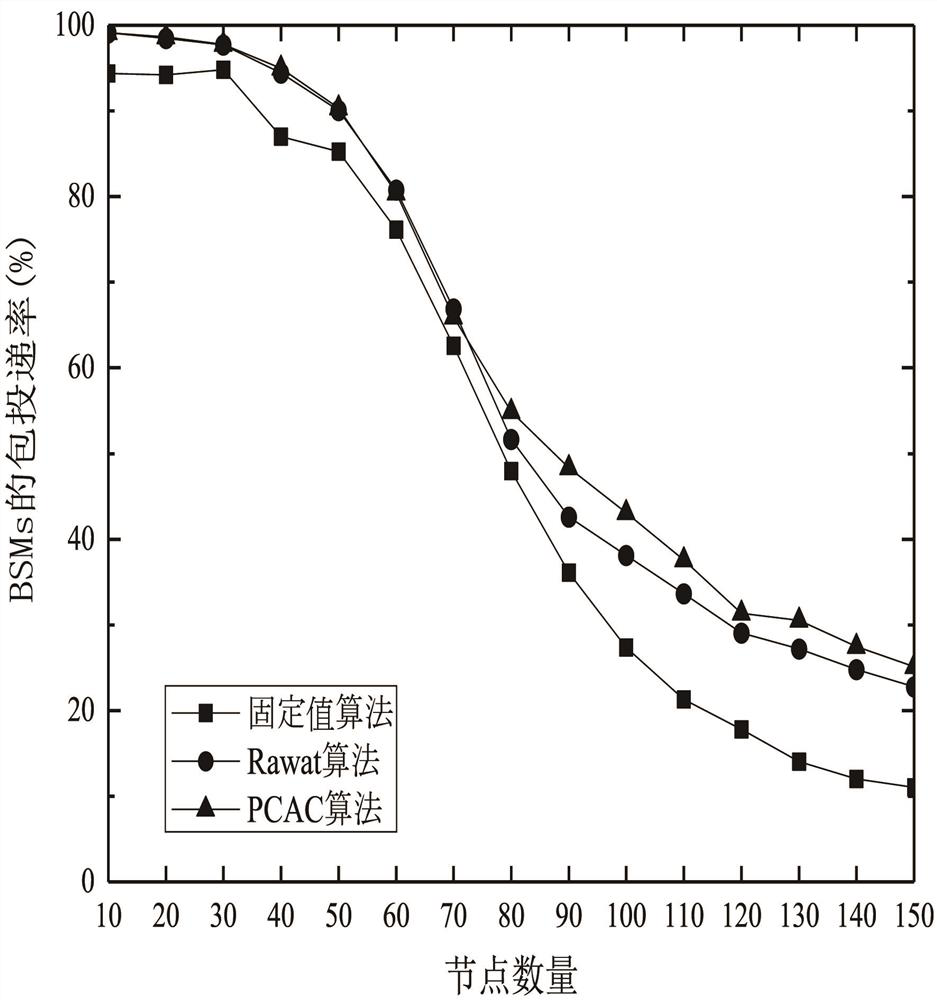An adaptive control method for joint power and contention window for safety applications in Internet of Vehicles
A technology of adaptive control and contention window, applied in the field of adaptive control algorithm of joint power and contention window, can solve the problems of short communication link, difficulty of transmission power contention window to meet security requirements, and inability to guarantee emergency message transmission delay, etc. Achieve reliable transmission, improve system throughput, and increase duration
- Summary
- Abstract
- Description
- Claims
- Application Information
AI Technical Summary
Problems solved by technology
Method used
Image
Examples
Embodiment Construction
[0043] The present invention will be further described below in conjunction with the accompanying drawings and specific embodiments. Adaptive control algorithms for joint power and contention windows for safety applications in Internet of Vehicles, such as figure 1 As shown, the algorithm includes the following steps:
[0044] 1) Once the vehicle enters the road, the system parameters are initialized, the transmission power takes the maximum value, and the competition window takes the minimum value, α=0.25, where α is a constant and depends on the traffic flow theory. The maximum transmission power is 32, and the minimum contention window is 15. α comes from the document "Local density estimation and dynamic transmission-range assignment in vehicular ad hoc networks".
[0045] 2) Each vehicle periodically broadcasts data packets containing the vehicle ID, 12-digit serial number, and basic safety message BSMs of the motion state. The basic safety information of the vehicle's...
PUM
 Login to View More
Login to View More Abstract
Description
Claims
Application Information
 Login to View More
Login to View More - R&D
- Intellectual Property
- Life Sciences
- Materials
- Tech Scout
- Unparalleled Data Quality
- Higher Quality Content
- 60% Fewer Hallucinations
Browse by: Latest US Patents, China's latest patents, Technical Efficacy Thesaurus, Application Domain, Technology Topic, Popular Technical Reports.
© 2025 PatSnap. All rights reserved.Legal|Privacy policy|Modern Slavery Act Transparency Statement|Sitemap|About US| Contact US: help@patsnap.com



